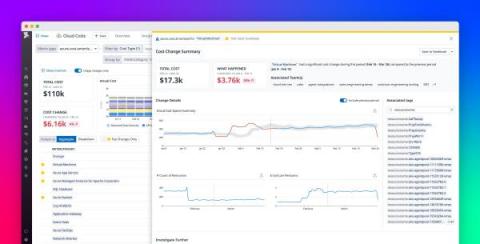Operations | Monitoring | ITSM | DevOps | Cloud
Cloud
The latest News and Information on Cloud monitoring, security and related technologies.
Snowflake Vs. AWS Vs. Azure: Which Should You Use?
What is Cloud Repatriation?
In the modern digital age, the migration of data and applications to the cloud has been a significant trend, prompted by the promise of increased efficiency, scalability, and reduced IT costs. Cloud services such as Microsoft’s Azure Cloud have become increasingly popular, offering a host of services including computing power, storage solutions, and advanced analytics.
Head-to-Head: Active Directory vs. Azure Active Directory - Which One Wins?
When it comes to identity and access management solutions, two names that often come up are Active Directory (AD) and Azure Active Directory (AAD). While many people are familiar with AD, AAD is still a relatively new concept to some. In this article, we will take a deep dive into both directories and explore their similarities, differences, pros, cons, and everything in between.
How Runbook Automation can Simplify CloudOps Use
.Organizations in every industry continue their transition to cloud services, and while this may be a step forward in general, it does bring with it its own unique set of challenges. Cloud use, and in particular CloudOps, relies on a complex and intricate infrastructure which is difficult to manage and maintain, and it's a critical part of keeping a business' networks functioning. This makes finding a way to simplify the use of CloudOps a top priority for many businesses, but does a solution exist?
Building and deploying AWS email templates with Azure DevOps
This is the third and final post (for now) in the series about developing email templates with MJML and deploying them to AWS. In the previous post, we developed a Gulp script to automatically build HTML from the MJML file and insert it in a template file for AWS. In this post, we will set up an automated build and deployment of the email template using Azure DevOps. A quick recap.
Avoid Azure migration cost overruns with Datadog Cloud Cost Management
Migrating your on-prem applications to Azure can help you improve scalability, reliability, and security. It can also help reduce costs and free your engineering teams to focus on innovation and performance optimization. But it can be hard to understand Azure costs as they evolve during your migration and to see how they correlate with your resource utilization once you’re up and running in Azure.
AppDynamics Cloud enhancements for hybrid cloud, anomaly detection and usability
Introducing new capabilities expanding hybrid cloud support for VMs, Kubernetes and Linux apps running in public or private clouds, enhancements in application to infrastructure correlation using AI/ML-powered anomaly detection and more.
Logic App Best Practices, Tips, and Tricks: #29 How to validate if an Array is empty
RDP Shortpath monitoring in Azure
Since Microsoft announced the RDP Shortpath feature was going to be enabled by default on September 6, 2022 for all Azure Virtual Desktop (AVD) customers, monitoring and troubleshooting this feature has become important. RDP Shortpath feature improves the AVD connectivity by establishing a direct UDP protocol between the AVD session hosts and the Remote Desktop Client by reducing the dependency on gateways.











